The German warship ended its days, sunk by its crew, in the Río de la Plata.
By Adrian Luciani
aedgarluciani@gmail.com
Today marks the 83rd anniversary of the sinking, by her crew, of the German battleship Graf Spee in the waters of the Río de la Plata, in front of the port of Montevideo.
Her story, widely disseminated, captivated and continues to captivate millions of people around the world, and has some interesting edges linked to Bahía Blanca, in the south of the province of Buenos Aires, Argentina.
Surely, the best-known chapter has to do with the confinement of 350 crew members for two years, and after the Battle of the Río de la Plata, in the former Club Hotel in Villa Ventana.
But there are other exciting stories that also relate the ship to the Southeast of Buenos Aires.
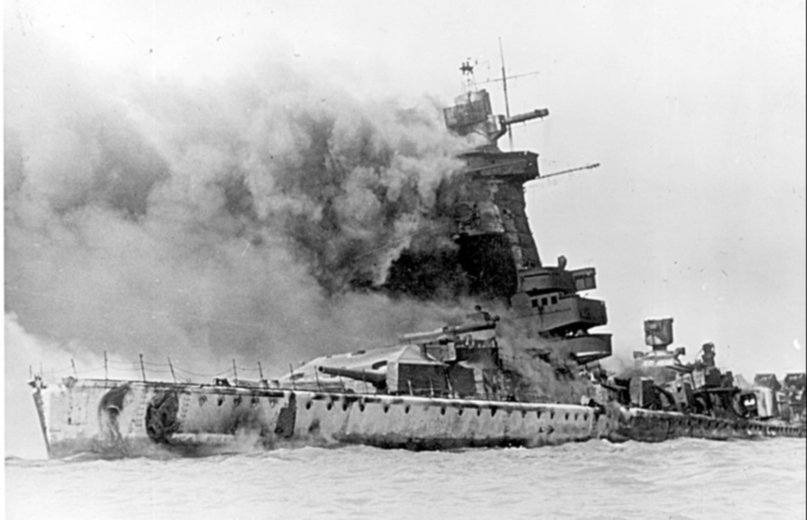
The Graf Spee burns in the Río de la Plata after being blown up by her crew..
One is that of Gustav Mönch, the spy who lived next to the Castle of Ingeniero White (Bahía Blanca), an employee of the plant, who was dedicated to identifying the ships that entered and left, collecting data on what they loaded and where they were going, to then transmit them to Germany through a chain of Nazi antennas that was within the province of Buenos Aires, the main one in the town of Monasterio, near the city of Chascomús.
To this chapter we must add the role of the ship Ussukuma, a merchant ship linked to Bahía Blanca, since days after the start of the war she moored in the port of Ingeniero White and was later sunk off Necochea.
Some researchers, such as the late Jorge Jordi, claim that this ship was named after the Graf Spee because its mother ship, the Altmark, already had 300 merchant prisoners on board that the battleship had sunk and, as its crew was 100 sailors, if the prisoners revolted, everything could be known.
The concrete thing is that the passenger ship, as mentioned by "La Nueva Provincia", in its edition of Thursday, October 12, 1939, arrived a day before at the whitense port.
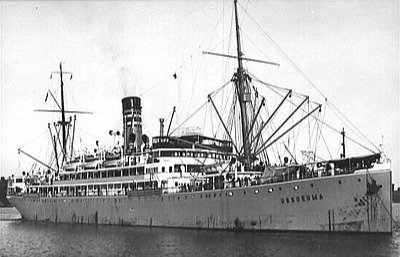
The Ussukuma in the Bahía Blanca port.
The lack of official information contributed to creating great expectations and curiosity among the population, giving rise to more than a few versions and comments.
"Shortly before 11 o'clock yesterday, a ship anchored in the Ingeniero White roadstead that did not fail to attract attention due to its characteristics. It is a large ship, extraordinarily superior in the displacement of its tonnage to those that arrive in daily to local docks," he said.
On December 6, 1939, almost two months later, the local newspaper reported the departure of the Ussukuma.
"She occurred in the same conditions as her arrival: without prior announcement." Then, the next day, the morning paper reported her capture by British ships.
From there the story is not so clear. For the journalist and writer Carlos De Nápoli, who died in 2011, when boarding the "Ussukuma" before it sank, the British captured not only the strategic Nazi Enigma transmission encoding machine, but also its operators.

The Graf Spee seen from Montevideo.
This, according to the researcher, allowed the British to find out about the intention of the "Graf Spee" to take the Malvinas Islands, for which reason, from the "Ussukuma" machine, a message was sent to the German battleship, indicating the day, time and position where replenishment would occur.
Some historians, on the other hand, do not believe that Enigma was used by the fleet of the Third Reich shortly after the war began and others, like Jordi, held a different version.
In this sense, he always assured that it was not the English who sank the Ussukuma, but her own crew members, so that she would not fall into enemy hands.
The information, according to what he told us years ago, was obtained through dialogue with crew members and relatives of Graf Spee sailors.
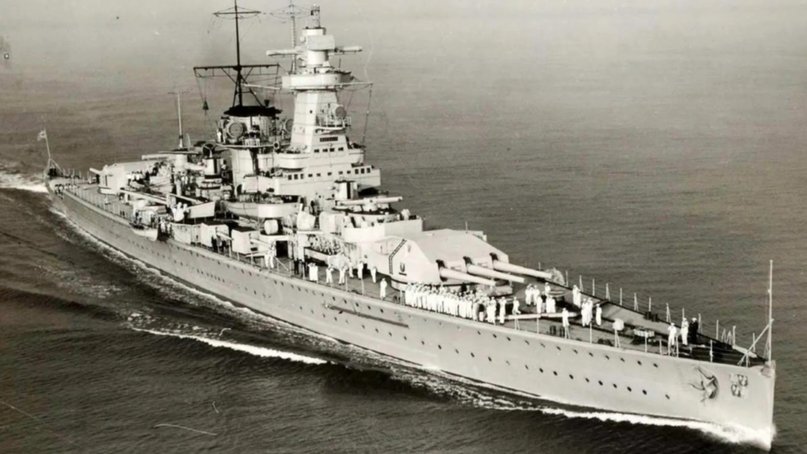
But beyond all, it is possible that the crew of the German merchantman have provided details on the movements of the battleship, which days later was intercepted by the English cruisers "Ajax", "Exeter" and "Achilles".
But there is one more element, and by the way relevant, that unites the Graf Spee with Bahía Blanca.
After the battle in the Río de la Plata, the German warship had only 72 hours to be repaired and leave the port of Montevideo, according to the deadline granted by the Uruguayan authorities.
Two days after she decided to sink it off Montevideo, her commander, Captain Hans Langsdorff, who was staying at the Navy Workshop in Dársena Norte, received the Argentine frigate captain Eduardo Aumann.
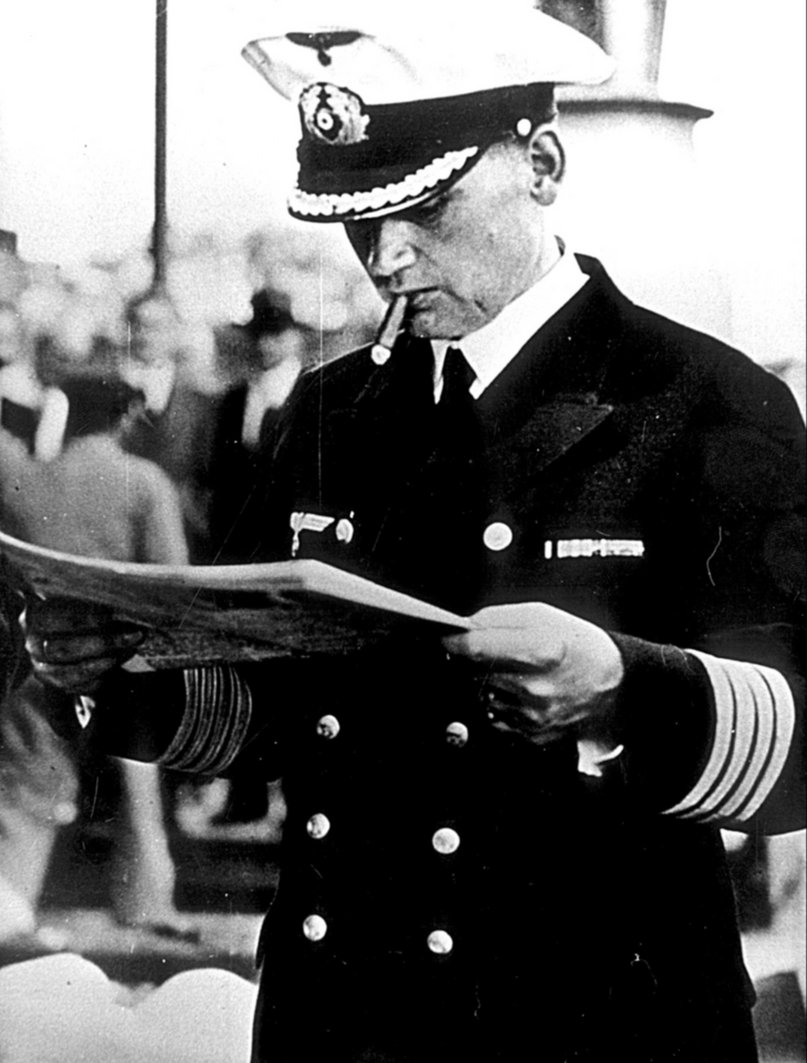
Hans Langsdorff
He had gone to visit him at the request of the Argentine authorities, taking advantage of his command of the German language.
Aumann, after a dialogue alone with Langsdorff, made a report for the director of the Naval War College, Captain Héctor Vernengo Lima.
This document was rescued by Juan Bautista "Tata" Yofre in his book "Between Hitler and Perón: The sinking of the Graf Spee and the arrival of the first Nazis in Argentina".
Aumann's account, of almost six pages, states:
"According to the statements of Captain Langsdorff, the combat was interrupted after an hour and a quarter of its initiation, that is to say at around 0730 hours, when the Exeter withdrew from the combat, very battered, hidden in a thick column of smoke; the Graf Spee then headed west about while the cruisers held a considerable distance.
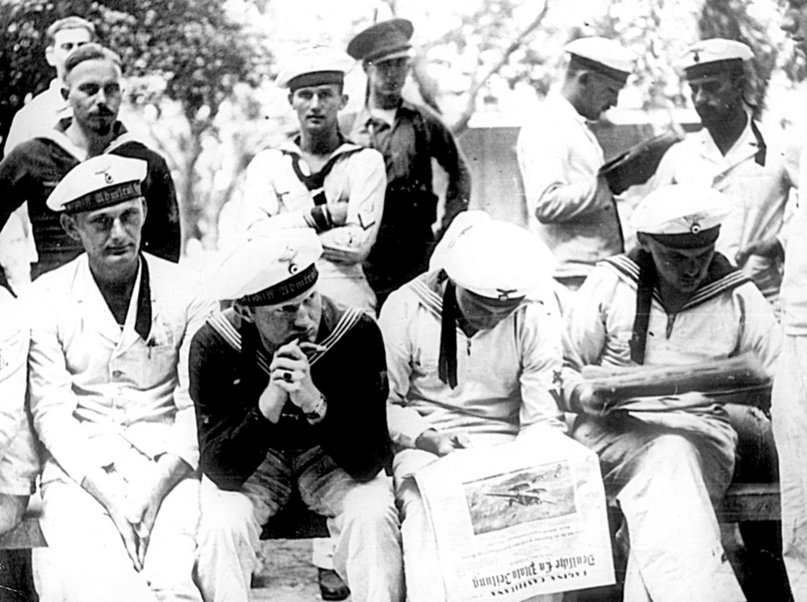
Crew members of the Graf Spee after the battle with the English cruisers.
"Langsdorff said that there was a time when circumstances imposed on him the obligation to adopt an important decision and that it consisted of the need to choose between the ports of Río Grande do Sul, Montevideo or Puerto Belgrano, to enter"
“He said that Río Grande immediately ruled it out for obvious reasons and that it was resolved by Montevideo; but that he recognized a posteriori that his decision was not the best one imposed by the circumstances, since the retrospective analysis that he had made had led him to the conclusion that it would have been more appropriate to go to Puerto Belgrano.
"In this regard, he clarified that he urgently needed to reach port because, although his ship had ridiculous damage, due to its insignificance, from the point of view of combat value, they nevertheless affected its navigability conditions, to which was added the fact that he needed to ship supplies, since he could not take upon himself the responsibility of heading out to sea leading a crew of more than 1,000 men, with only three days' worth of supplies on board".

Captain Eduardo Aumann.
"I had the impression that Captain Langsdorff made the decision to go to Montevideo, with some haste and under the pressure of a fixed idea that worried him and which was, in my opinion, to avoid committing himself to his ship in a maneuver of action in which he could receive breakdowns that compromise his ability to continue the war on commerce and return to his Homeland (...)
He also said that the internment of the ship in Montevideo was unacceptable due to the lack of guarantees offered by Uruguay regarding its future neutrality and this led to the risk that if that country entered the war, the ship would fall into the hands of the English and He stated that he could not go to Buenos Aires because the engines were not going to withstand navigation through the muddy bed of the access channel (NDR: the water and cooling intakes were close to the keel).
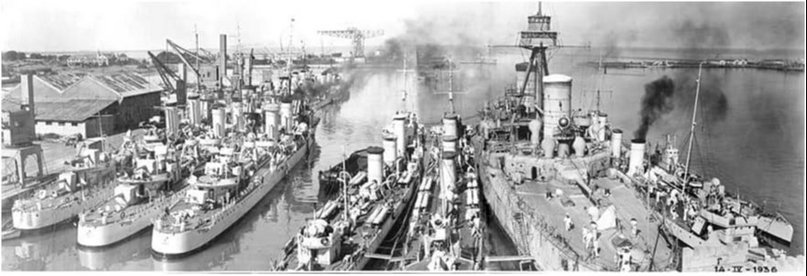
Belgrano Port in the mid-30s.
"It has not been possible to obtain from Captain Langsdorff a satisfactory explanation regarding the reasons that prompted him to enter the port of Montevideo and in this regard I have the impression that he deeply regretted the error of his decision, since he repeated to me several times that he should have addressed to Puerto Belgrano. On the other hand, he expressed deep resentment for what he described as a flagrant violation of International Law committed by the Government of Uruguay by not allowing him to put his ship in a seaworthy condition. From the above I have come to the conclusion that Captain Langsdorff has had to make the decision to enter Montevideo in circumstances in which, for reasons that are difficult to explain, he has failed in the clarity of his reasoning in the heat of combat and was overwhelmed by the weight of the responsibilities he had to face in circumstances unique and unforeseen."
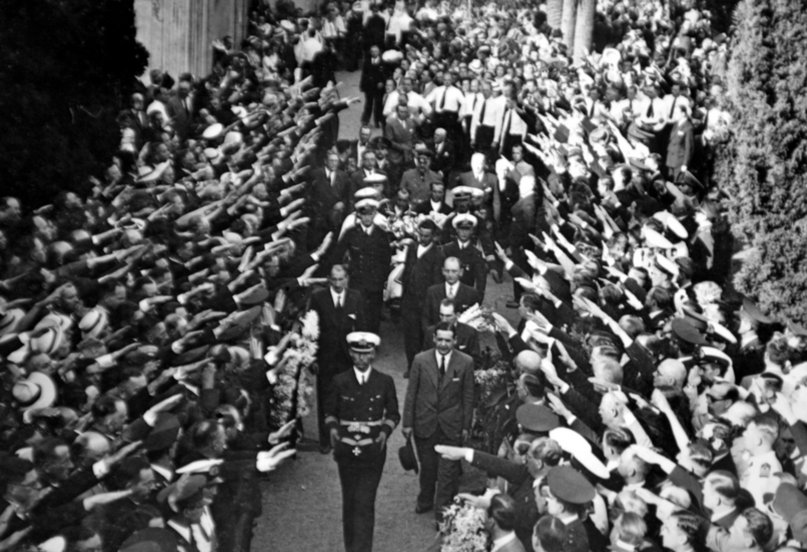
Langsdorff's funeral in Buenos Aires.
After his meeting with Aumann, Langsdorff attended a dinner at his tribute.
After the meeting, according to Yofre, the German soldier returned to his room at the headquarters of the Navy Workshop, sat at his desk and wrote three letters: to his wife, his parents and his Ambassador von Thermann. He then took his own life.